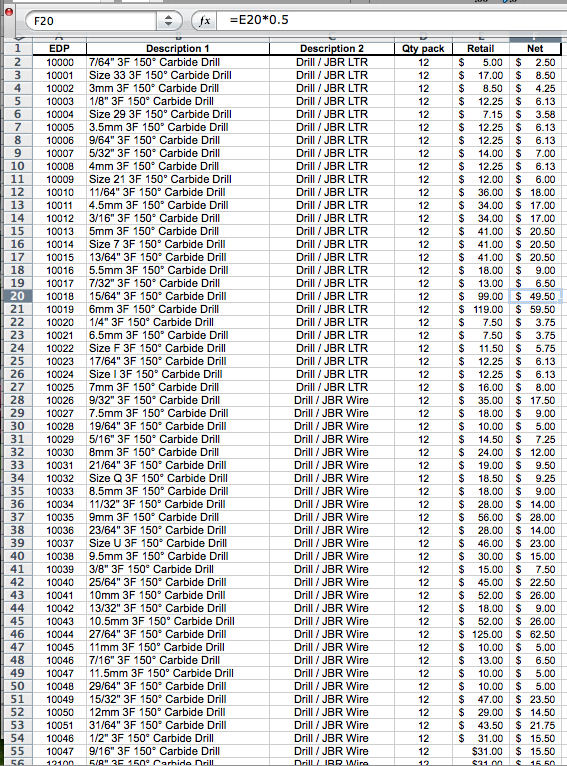It is currently managed by GS1 US, which is responsible for overseeing code change requests, revising the codes and issuing regularly scheduled updates to the code, as well as managing special projects and initiatives.
Eventually, you are going to have to attach a UNSPSC code to all of your products. Take a peek at the link above to understand it a bit better.
Labor Costs
If someone at an end user keys in an order and faxes it to a distributor, that distributor keys in the order and faxes it into the manufacturer. The manufacturer keys it into their system. The product ships and a hard copy of the invoice is sent to the distributor who must key in some more information, then the manufacturer sends out a printed copy of the invoices to their agents. The agents then key in the sales again.
That’s an awful lot of repetitive keystrokes folks.
It’s pretty easy to see why moving to electronic databases and communication is happening and is going to move to a standard.
Standards
Outside of THOSE headings there should NOT be any other row that describes something about a set of items. If there is information that applies to the entire group of items (rows) then each item should have that same information. To the right you will see an example of something that is ready for import. Notice how it is different from the spreadsheet pictured above. There is one column heading throughout. This is really not for viewing but for importing. |
But there is ONE error in the picture. Can you see what it is? To be honest, you would probably not even catch the error. Take a look at the FORMULA in the highlighted cell. It’s a formula and not text. The pricing columns all have dollar signs in them. That’s a nice thing to do if people are going to read it but the computer has to import it.
There have been cases where distributors said “Wow this is a great file and ready to import!” but then the import went south with strange errors. It wasn’t the dollar signs, it was the rounding. There was multiple column pricing for quantity breaks.
Everything was a formula and when it was converted to text it had numbers that where out 6 decimal places. Because the formula’s where all based upon one cell as a baseline, the rounding errors got bigger and bigger and when the import happened the pricing was up to .27 cents off on certain items. That can add up if they standard package quanity is 144 pieces. Why did it happen? Because when the import was done it only imported the first two decimal places.
Once you’ve completed your spreadsheet save all of the fields as TEXT and this problem will go away.
Some other things to consider: What software system do your distributors use to run THEIR BUSINESS? It’s a good idea to ask. You may have field length issues when importing.
If you have a Description 1 field that is 100 characters long but the field in the software only permits 43 characters, with the rest being parsed, that information IS NOT going to be in the database. If you have one critical dimension at the end of the description and upon import an entire group of items is parsed all of the part numbers will be different but the descriptions will all be the same.
“Well, we can’t make 100’s of special prices list for EVERY distributor” you say. You don’t have to. Just find out what the software is at your key distributors and accommodate them.
“Again, no one has really complained about this before so we don’t think it’s a big issue”
When do you update price lists? When you introduce a new product or have a price increase. Right?
Now, what does a good outside sales force do when there is a change? They have a sales meeting with the distributors to review the new products (and new catalog) and get the distributor salespeople pumped up to go out and sell. In many cases this is happening as soon as the new price list is put out… in some cases your sales force is brining it with them.
Is the IT person in the room for the meeting? Generally the answer is no. Does your outside sales force commonly work with the IT people at a distributor? Do they even know who does it if you ask them? Generally, the answer is no. When the IT person gets the file, if they discover it’s going to take some time to clean up it gets put on the backburner, especially if their primary responsibility is accounting or other back office work.
So what happens in the field? Your salespeople go out, make calls with the distributor salespeople and get some orders. They place the orders. The price list isn’t updated so they spend the next couple of days fielding questions, dealing with distributor inside salespeople and your customer service people. They aren’t selling. You’re losing money and you’re getting a “difficult” to deal with reputation.
Take Aways
- Take a look at your price lists. Are they easy to import?
- What software are your distributors using? Are your price lists easy to import?
- Have you ever called your distributors and asked them what they would like to see improved or changed in you price lists to make their job easier?



 RSS Feed
RSS Feed